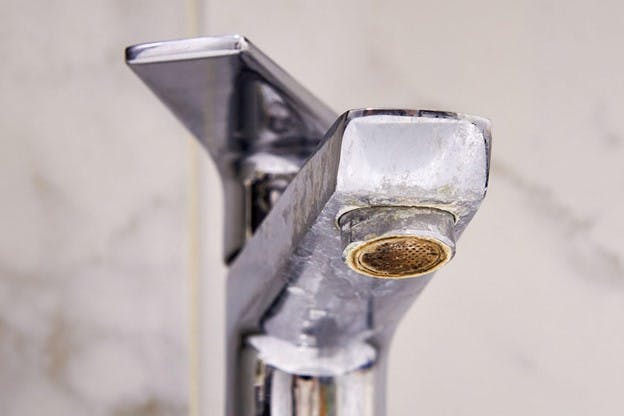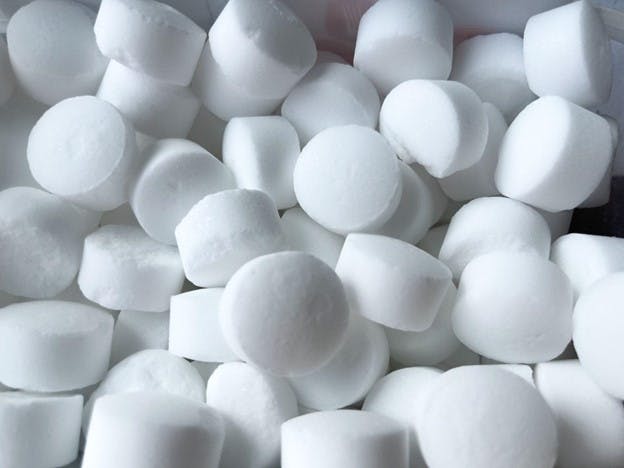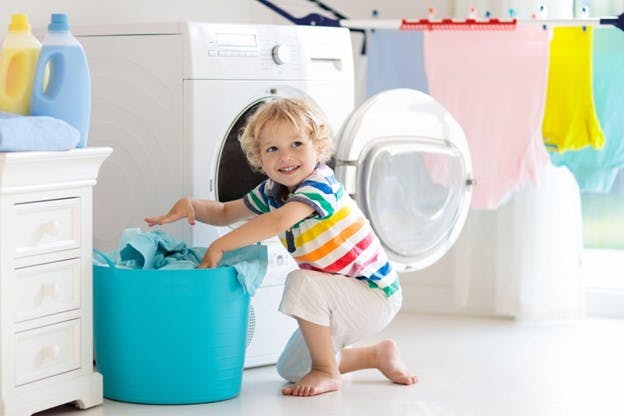April 2024
Treating Hard Water: How Many Grains Should I Get On My Softener?
The power of water is awesome. It breaks down almost everything it touches. If you’ve ever picked up a smooth river rock, you’ve seen water’s ability to remove particles from even the hardest materials. Many of these particles are carried in the water until they are filtered out or deposited elsewhere. This includes hard water minerals.
Hard water minerals can travel in water for thousands of miles before making their final stop inside of your pipes and on your surfaces. Getting rid of them before they cause you hassle and cost you money requires a water softener.
Unfortunately, it’s not quite as easy as just buying any old water softener. You have to understand a little bit about your water and your water usage to figure out which softener is right for you.
There are many water softeners out there, with different features and stats, so there's a lot to consider before you make your decision. One of the most important things you need to answer is, "How many grains should I get on my softener?"
If you’re scratching your head right now trying to figure out what a grain is, don't worry. We’ll help you understand grains for your water softener, figure out how many you're dealing with, and work out exactly how to figure out the right water softener size for your home.
What Is Hard Water?
Hard water is water that has a high concentration of certain minerals. The water that comes through your pipes starts out as groundwater or surface water. It comes from natural underground aquifers, lakes, rivers, and streams. When water travels through the environment, it encounters soil and rocks, which contain minerals that break down and get absorbed by the water.
On a microscopic level, this looks like tiny rock fragments of calcium and magnesium being picked up and carried off. If the concentration of these calcium and magnesium ions in the water is high enough, it's known as hard water.

Why Should I Soften My Water?
Hard water is not dangerous to drink, but if your home water is full of microscopic minerals, they will end up building up where you don’t want them. Here are a few issues you’ll notice if you have hard water:
- Decreased water flow or pressure: Hard water minerals build up in pipes and water fixtures, decreasing the amount of water that can pass through.
- Clothes wearing out faster: Minerals in your water damage the fibers in your clothing during washes.
- Less energy efficiency in appliances: Mineral build-up means your appliances work harder and wear out quicker, costing you money.
- Chalky film on your surfaces: If you’ve ever touched your bathroom tile and it felt like a chalkboard, these are hard water minerals, or limescale build up. Over time, this becomes almost impossible to clean off.
- Bacteria and mold: Millions of microscopic calcium deposits on your surfaces are perfect attachment points for bacteria and mold to thrive.
- Less effective soap: Water filled with minerals doesn’t sud up as well as soft water. This means you have to use more soap for the same results.
- Rust stains: A lot of hard water is also filled with iron, which can cause rust stains that are almost impossible to clean.
- Mineral spots on cars and dishes: If you’ve ever washed your car and noticed white spots all over your paint once it dried, that’s because of those hard water minerals sticking around after the water evaporates.
- Damaged hair and skin: Just like hard water damages your clothes, it can also damage and dry out your skin and hair.
If you’re dealing with very hard water, the benefits of a water softener or a salt-free water conditioner are seemingly endless.
How Do Water Softeners Work?
Water softeners work through a process called "ion exchange." This water treatment process exchanges the hard water minerals, like calcium and magnesium ions, with a small amount of salt or potassium.
Inside the mineral tank of a water softener is a resin bed of negatively charged beads covered in positively charged sodium and potassium ions. As hard water passes through the tank, the positively charged calcium and magnesium ions are attracted to a negatively charged bed of resin beads. Because the positive charge of calcium and magnesium ions is stronger than the positive charge of sodium and potassium, the resin exchanges the hard water minerals for the salt and traps them. This reduces the hardness of your water.
When the surface of the resin beads is fully saturated with hard water minerals, the beads are regenerated by backwashing a strong brine solution over them. The high concentration of salt causes the hard water minerals to be displaced from the resin and flushed out of the system. Typically, this regeneration cycle happens about once per week and allows the resin to be reused.
What Is a Grain and How Is It Measured?
In a lab, the amount of calcium and magnesium ions in water is measured in milligrams per liter (mg/L), which can also be expressed as parts per million (ppm). In the water softening industry, it’s better known as grains of hardness per gallon (gpg). One grain is the equivalent of 17.1 ppm.
So, dividing the total parts per million by 17.1 will give you the grains per gallon of water, and the number of grains determines your water hardness level. If the minerals in your water come to 150 ppm, your water hardness level (150 divided by 17.1) would be 8.8 gpg.
- 0 to 3 gpg is considered soft water.
- 3.5 to 7 gpg is considered moderately hard.
- 7.5 gpg and over is considered hard water.
The example above falls into the category of hard water. In some parts of the United States and Canada, water hardness levels can be higher than 15 gpg, which is considered extremely hard water.

How Do I Calculate How Many Grains Should I Get On My Softener?
A water softening system is rated by its grain capacity — or how many grains it can remove from your water supply before needing to be regenerated. For instance, our two best sellers at HomeWater have a capacity of 22,000 grains and 35,000 grains.
If you're wondering, "How many grains should I get on my softener?" there are a few considerations. The two biggest are: your water hardness level and your household water consumption. These two measurements will help you to figure out the size of water softener you need.
If you don’t know your water hardness level, you have a few choices. If you have city water — meaning you get a water bill — you may be able to ask your water supplier how many grains of hardness are in your drinking water.
If you have well water or your water supplier is unable to provide you with that information, you’ll have to do a hard water test. You can get these test kits in your local hardware store.
When determining your grains per gallon, make sure to account for iron. For every 1 ppm of iron found in your water, add 4 gpg to your total.
The next thing you need to know is how much water your household uses. Again, if you get a water bill, this should be easy to find. If you don’t, you can estimate. On average, the daily water usage per person is about 80 gallons of water per day. So take the number of people in your house and multiply it by 80 gallons to get your average daily water usage.
Once you know how many grains of hardness per gallon are in your water and your water usage, you can figure out the minimum water softener capacity you’ll need.
Just take your grains per gallon and multiply it by your daily household water usage and you’ll get the daily grains that need to be removed.
For instance, if you have four people in your home using 80 gallons per day, that’s 320 gallons of water per day that will be treated. Then if your water has 10 gpg, you’d take 320 gallons and multiply it by 10 gpg to come up with 3200 grains of hardness that your water softener will need to handle.
Because water softeners usually only regenerate once per week, you’ll multiply this by seven days to get 22,400. So, in this example you’d have:
4 people x 80 gallons = 320 gallons of water
320 gallons x 10 gpg = 3,200 grains of hardness treated daily
3,200 daily x 7 days = 22,400 total hardness capacity you’ll need (at minimum)
We say this is the minimum capacity because you’ll want to allow for times of heavy water usage. Going up a size from what you need can help you be prepared for all conditions.

Finding the Right Water Softener Will Save You Money
If you’re struggling with hard water, a properly sized water softener will improve your life in many ways. From easier household cleaning to saving money on soap and skincare, you’ll wonder what you ever did without one.
However, choosing the right water softener requires you to understand your water softening needs. When you ask yourself, "How many grains should I get on my softener?" consider the hardness of your water and how much water you use. Then, size up for those busy days.
Or if you’d rather not deal with salt at all, you can try our UPSTREAM 4-Stage Whole Home Water FIlter and add on a salt-free water conditioner. This filter-first method reduces countless water contaminants like chlorine, heavy metals, and microplastics from every faucet in your home while eliminating the need for a traditional water softener.
HomeWater has a variety of options to meet your filtration and softening needs. Take our Filter Quiz to find your perfect water filter today.